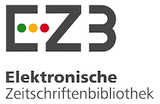Tumescent anesthesia or epidural anesthesia combined with intercostal block in bitches submitted to mastectomy
DOI:
https://doi.org/10.1590/1809-6891v21e-53552Abstract
The present study aimed to evaluate the use of tumescent local anesthesia or epidural anesthesia associated with an intercostal nerve block in bitches submitted to mastectomy. Fourteen bitches from the clinical routine of the Veterinary Hospital of the Federal University of Pelotas were premedicated with acepromazine (0.03 mg/kg) and morphine (0.3 mg/kg) intramuscularly, then induced with propofol (2 to 6 mg/kg/IV) and maintained with 1,4V% isoflurane (calibrated vaporizer). The patients were randomly allocated into: GALT Group (n=7), which received tumescent local anesthesia (0.16%) at the dose of 15 mL/kg, and the GEBI Group (n=7) which received epidural anesthesia with lidocaine (5 mg/kg) and morphine (0.1 mg/kg) associated with an intercostal nerve block from the 6th to 12th intercostal space with lidocaine (2 mg/kg). An increase higher than 10% in heart rate, respiratory rate, systolic blood pressure, diastolic blood pressure and mean arterial pressure were considered as possible signs of nociception, to which fentanyl was administered intravenously as rescue analgesia. Postoperative analgesia was evaluated by means of the modified Glasgow scale at 30, 60, 120, 240 and 360 minutes. There were no differences in physiological parameters (0>0.05) in the transoperative period intra-group and inter-group the groups. The GEBI Group required more frequent transoperative rescue analgesia (9) in comparison to the GALT Group (5), but with no statistical difference. During the postoperative period, there was no need for rescue analgesia in either group. Results suggest that epidural anesthesia associated with intercostal nerve block can be used as an alternative technique in patients with restrictions against the use of local tumescent anesthesia.
Keywords: mammary tumors, pain, locoregional anesthesia, opioid.
Downloads
References
Fantoni D, Garofalo NA. Fármacos Analgésicos Opioides. In: Fantoni D, editor. Tratamento da dor na Clínica de Pequenos Animais. Rio de Janeiro: Elsevier; 2012. p. 109-126.
Ledowsky T, Reimer M, Chaves V, Kapoor V, Wenk M. Effects of acute postoperative pain on catecholamine plasma levels, hemodynamic parameters, and cardiac autonomic control. Pain. 2012;153(4):759-764.
Mitch P, Hellyer P. Objective, categoric methods for assessing pain and analgesia. In: Gaynor & Muir, editors. Handbook of veterinary pain management. Missouri: Mosby; 2014. p. 78-109.
Grupta K, Kshirsagar S, Chang L, Schawartz R, Law P, Yee D, Hebbel RP. Morphine stimulates angiogenesis by activating proangiogenic and survival promoting signaling and promotes breast tumor growth. Cancer Research. 2012; (62):4491-4498.
Credie LFGA, Luna SPL, Futema F, Silva LCBA, Gomes GB, Garcia JNN, Carvalho LR. Perioperative evaluation of tumescent anaesthesia technique in bitches submitted to unilateral mastectomy. BMC Veterinary Research. 2013; (9):178-186.
Abimussi CJX, Menegheti TM, Wagatsuma JT, Floriano BP, Arruda AMM, SANTOS PSP, Olivera VNLS. Tumescent local anestehsia with ropivacaine in diferente conentrations in bitches urndergoing mastectomy: plasma concentration and post-operative analgesia. Veterinary Anaesthesia and Analgesia. 2014. 41: 516-525.
Cassu RN, Melchert A, Silva APG, Reis AM, Meirelles CC. Lidocaína com vasoconstritor isolada e associada ao fentanil via peridural em cães. Ciência Rural. 2010; (40)3:580-586.
Campoy L, Read M, Peralta S. Técnicas de Anestesia Local e Analgesia em Cães e Gatos. In: Grimm, K, editor. Lumb & Jones: Anestesiologia e Analgesia em Veterinária. Rio de Janeiro: Roca; 2017. p. 840-844.
Jones RS. Epidural Analgesia in the dog and cat. Veterinary Journal. 2011; (161)2:123-131
Evans HE, De Lahunta A. The abdômen, pélvis, and pelvic limb. In: Evans HE, De Lahunta A, editors. Guide to the dissection of the Dog. Filadélfia: Saunders. 2010; p.136-207
Muller MO, Fornarolli TF, Arruda P, Duque CTN, Bego SC, Castro JLC, Capriglione LGA. Relato de Caso: efeitos analgésicos da anestesia epidural cranial associada ao bloqueio dos nervos intercostais em cadela submetida à mastectomia unilateral radical. Revista Acadêmica, Ciências Agrárias Ambientais. 2014; (12): 48-49.
Kumari PV, Veena P, Dhanalaksmi N, Veerabrahmaiah K, Rao C. Evaluation of tumescent anaesthesia and fentanyl analgesia for mammary tumour excision in dogs. Journal of Entomology and Zoology Studies. 2018; (6): 569-572
Aguirre CS, Minto BW, Faria EG, Horr M, Filgueira FGF, Nardi AB. Coventional anesthsia and tumescente technique in bitches which underwent mastectomy. Evaluation of postoperative pain. Arquivo Brasileiro de Medicina Veterinária e Zootecnia. 2014; 66(a); 1073-1079.
Sudbrack G, Geier KO. Cateter epidural deslocado: uma causa de falha de analgesia. Relato de Caso. Revista Brasileira de Anestesiologia. 2002: (52); 55-61.
Gorgi AA, Hofmeister EH, Higginbotham MJ, Kent J. Effect of body position on cranial migration of epidurally injected methylene blue in recumbent dogs . American Journal of Veterinary Research. 2006: 67(2); 219-21.
Mathews KA, Pettifer G, Foster R, McDonnel W. Safety and efficacy of preoperative administration of meloxicam, compared with that of ketoprofen and butorphanol in dogs undergoing mastectomy surgery. America Journal of Veterinary Research. 2001: 62(6); 882-888.
Abimussi, CJX, Ferreira JZ, Floriano BP, Paes F, Perri SHV, Oliva VNLS. Anestesia local por tumescência com lidocaína em cadelas submetidas a mastectomia. Arquivo Brasileiro de Medicina Veterinária e Zootecnica. 2013: (65)5; 1297-1305.
Ronchi SJ, Gehrcke MI, Regalin D, Oleskovicz D, Period of latency, progression and duration of blockade of epidural anesthesia with lidocaine, bupivacaine or its association in dogs. Arquivo Brasileiro de Medicina Veterinária e Zootecnia. 2019: (51)6; 1839-1845.
Published
How to Cite
Issue
Section
License
Copyright (c) 2020 CIÊNCIA ANIMAL BRASILEIRA (Brazilian Animal Science)

This work is licensed under a Creative Commons Attribution 4.0 International License.
Authors who publish with this journal agree to the following terms:
- Authors retain copyright and grant the journal right of first publication with the work simultaneously licensed under a Creative Commons Attribution License that allows others to share the work with an acknowledgement of the work's authorship and initial publication in this journal.
- Authors are able to enter into separate, additional contractual arrangements for the non-exclusive distribution of the journal's published version of the work (e.g., post it to an institutional repository or publish it in a book), with an acknowledgement of its initial publication in this journal.
- Authors are permitted and encouraged to post their work online (e.g. in institutional repositories or on their website) prior to and during the submission process, as it can lead to productive exchanges, as well as earlier and greater citation of published work (See The Effect of Open Access).































